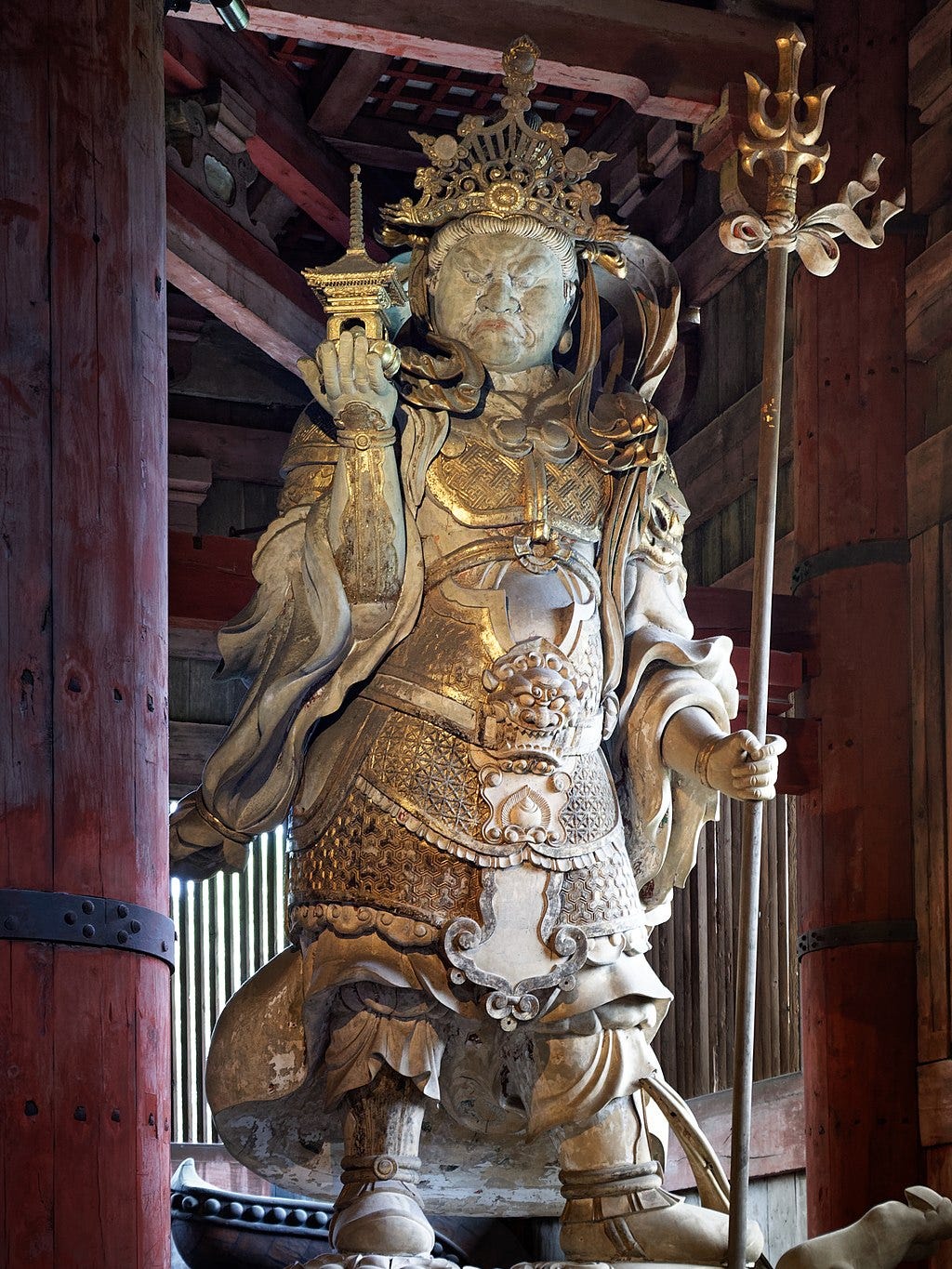A tiny letter from Nara
It’s dark outside my window, and I can feel the cold wind smashing into it, even though it can’t reach me. Not until I venture out later tonight, of course. It’s been sort of a long day, I moved towns today via an hour-long train journey. And nineteen kilometres of walking later, I’m back to my room for a pitstop. I promised myself I would send out something before the end of this Saturday, so I’m holding myself to it.
I love Bishamonten. The guardian of the north, leader of the four heavenly kings, protector of Dharma, bringer of fortune, god of warriors, the one who hears everything… Today, I saw what is for me one of his most powerful interpretations, at a staggering scale, over four meters tall. I was so taken that I forgot to even take a picture. (So here’s one from the internet.)

This is a letter, after all, not an art essay, so I’ll keep this short. He’s one of the earliest figures I encountered in Japanese mythology and once I saw depictions of him, I was just taken. His fury, his equanimity (weapon in one hand / wisdom in the other) and the fact that he’s the protector of the north, the most dangerous direction… Even more fascinating is him starting off as part of the Shitennō (the Japanese derivation of the Hindu Lokapalas) and eventually assuming the role of the protector of the nation, now that’s a nice character arc.
So I can't go to any temple without looking for him (apart from the Niō, but let’s save them for some other time), and today at the Tōdai-ji temple here in Nara, I had the pleasure of being in thrall of his oversized presence. In awe, really. (I must surely have photobombed some poor tourists’ pictures in the background with my mouth agape.)
Okay, I know where this is going. In a few sentences, it is going to devolve into a rant about the enduring power of myths, how they’re our only defence against the tyranny of time, how they reside in each and every one of us without us even being aware of it, and after a long argument trail, eventually, how one can never truly understand branding without understanding mythology… And that’s why I have to put Bishamonten to sleep for now. (But yes, for those who are curious, please do dig him up. He originates from the Hindu demigod Kuber, and it’s fascinating to learn how Hindu mythology got incorporated into Hindu-Buddhist mythology, which then found its way to Sri Lanka, Tibet, East Asia and China, from where it found its way finally to Korea and Japan, and how it branched off in unique ways in each of those places…)
Myths, they’re slippery things. Anyway, where was I?
Cold, wintry Nara, yes. It’s past midnight, and I got caught up writing this to step out in time to catch some dinner, but I’m going to step out anyway. To see how an ancient city feels like when everyone else is busy dreaming.
Tomorrow I shall head to the Hōryu-ji temple, to see the oldest surviving figure of Bishamonten, from the 7th century. And after that, I shall head to Asuka, as part of my quest to visit all the historical capitals of Japan (Asuka was home to the first emperor, long ago). A friend tells me there is nothing left in Asuka (1400 years is a long time indeed) and I’ll just have to stand there and imagine everything. Well, that I’m bloody good at.

